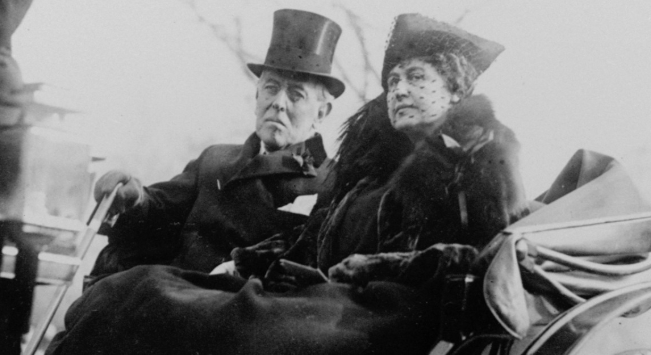
Losing the Peace, by Charles Euchner, offers an intimate, moment-by-moment, narrative of Woodrow Wilson’s last tragic month as an active leader in American politics.
This is the story of a unique figure in American politics, his immense powers of persuasion, the demons that prevented him from compromising or outflanking his opposition, and the defeat of the forces of reform and change in America until the Great Depression and Franklin Roosevelt.
Told in a gripping, cinematic style, Losing the Peace is not just the story of Wilson’s tour to promote the League of Nations. It is also an original, intimate portrait of a complex man who, even when he failed, dramatically shaped the American system and world affairs. It is also a portrait of America that was as unstable and riven with conflict as it is today. By showing the intersection of Wilson and characters he encounters—farmers and workers, ethnic groups, radicals, workers, educated elites, and veterans and their families—the book reveals the United States at one of its greatest periods of change.
Losing the Peace follows Wilson, from stop to stop, as he campaigns for the League. As we see Wilson make his case, we see also the changing face of America—with bitter divisions not only over the League, but also over labor, trade, taxes, race, ethnic groups, immigration policy, and more. These divisions frustrated Wilson’s goal of uniting America; at times, Wilson himself worsened those divisions with his incendiary and uncompromising rhetoric.
Losing the Peace also cuts to Washington, where Lodge strengthened his coalition, and to the rallies of the well financed “truth squads” that rallied the coalition against the treaty. The story also cuts to events elsewhere that affected the tour, including General George Pershing’s triumphant New York parade, the Boston police strike, the nationwide steel strike, the catastrophe of the Spanish flu (which may have hit Wilson in Paris), battles over riots and terrorism, and ongoing developments in Europe where 14 wars still took place as other nations reckoned with the treaty.
This is not just a book about Wilson’s “swing around the circle” or his speeches or even about the Wilson-Lodge rivalry or even about the wobbly new postwar global order.
This is also the story of a nation transformed, not just by the bloodiest war in history, but also by America’s leadership in the world, the swelling power of America’s industrial giants, the decline of labor, the renewed rise of racist ideology, riots and suppression of dissent, and America’s splintering into factions more dangerous than any time since the Civil War.
This is the story of an exhausted political order, too weary to engage the possibilities of preventing war. It’s the story of seething political hatreds—partisan, sectional, ideological, economic—eager for dominance and revenge.
This is the story of a nation struggling to find a new identity as a superpower and the president who wanted to bend that status in new ways.
This is the story of a nation of “hyphenated Americans,” laborers, and blacks, who fought and sacrificed in the war and now saw themselves slipping into second-class citizenship.
This is the story of new technologies—in media, transportation, cities, farms, commerce, and the military—changing the basic logic of American politics and society.
This is the story of a nation fighting to head off foreign entanglements, long after those entanglements had become woven into the global and national fabrics.
Given the stubbornness and skill of the Republican opposition, as well as the national desire to return to “normalcy,” Wilson might have been doomed from the start. Even on his best days, Wilson’s appeals alienated potential allies and undermined the effort to create a majority coalition for a radically new approach to world politics.
Losing the Peace reveals not only a gifted president striving mightily to realize his greatest dream, but also his internal battle against his Shakespearean flaws of hubris, anger, and isolation. Even in tragic failure, though, Wilson’s campaign for the League of Nations transformed American politics.
Woodrow Wilson’s Western Tour displayed Wilson’s audacity and his gifts as an orator and his deep contradictions as a leader and a man. Wilson travels a country he barely knows anymore. He struggles to sell an idea that he calls as revolutionary as the nation itself—to a people eager to return to a world they had before the war. As Wilson faces the American people for the last time, “eye to eye and face to face,” Losing the Peace shows a dynamic, moralizing, oratorical president confront the limits of politics and reform.
